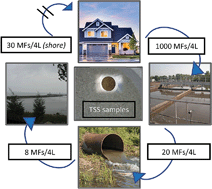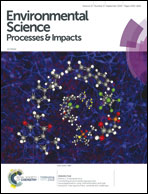Tracking the distribution of microfiber pollution in a southern Lake Michigan watershed through the analysis of water, sediment and air
Abstract
Microplastic waste is a worldwide problem, heavily afflicting marine and freshwater environments; the loading of this pollution in water, sediment and living organisms continues to escalate. Synthetic microfibers, resulting from the release of microscopic fibers from synthetic textiles, constitute the most prevalent type of microplastics pollution in aquatic environments. This study investigated the origin and distribution of synthetic microfibers in a representative Lake Michigan watershed in Indiana (USA) by analyzing water, sediment and air samples above and below wastewater treatment plant discharges, downstream in the watershed and water from the Lake Michigan shoreline. Synthetic microfibers were also quantified in wastewater from a local wastewater treatment plant (WWTP) and in laundry effluent. Laboratory testing of numerous fabrics suggests that Fenton oxidation, used to break down natural fibers, effectively eliminates non-polluting, natural fibers from the samples. However, the hydroxyl radical-mediated oxidation bleaches the dye from certain synthetic microfibers, which likely leads to under-reported values for these microplastics in natural samples. The data collected from the watershed samples indicate that approximately 4 billion synthetic microfibers are transported daily through the Lake Michigan tributary. Wastewater effluent is not the only source of synthetic microfibers, since surface water samples above the WWTP contained a similar load to downstream samples. Repeated sampling exhibited variability in the number of microfibers detected, substantiating the heterogeneous distribution of these pollutants and the requirement for multiple samples for a given site. The average load of synthetic microfibers from water sampled at the Lake Michigan shoreline was higher than the tributary water, suggesting the shoreline functions as a repository for the microfibers. Given the extent and potential consequences of this pollution, quantification of the ubiquitous plastic fibers can be instituted as part of the traditional total suspended solids (TSS) water quality monitoring parameter.



 Please wait while we load your content...
Please wait while we load your content...